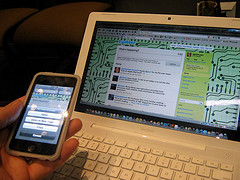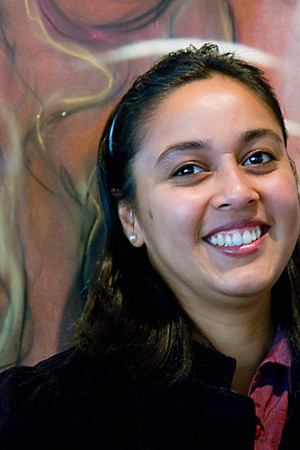Joining the social media bandwagon

I bet a whole bunch of you sitting out there might rightfully ask, why should I care, or why should I bother myself trying to learn and keep up with all this social media hype and jargon? That maybe a relevant question however I’m not here to change your mindset regarding that. I’m more interested in studying the underlying reasons behind people’s mentality on how they absorb these new social media tools. I’m curious to see what motivates us to join the social media bandwagon? Specifically, what is the thought process behind how an individual or a company at large chooses to adopt the current social media marketing trends?
I tried to analyze this using Everett Rogers’ Diffusion of Innovations Theory. According to Rogers, the diffusion of innovation occurs when the adoption of an idea, practice, or object spreads by communication through a social system. Adoption is similar to diffusion just that it involves the psychological processes an individual goes through, during the decision-making process. Rogers defines several intrinsic characteristics of innovations that influence an individual’s decision to adopt or reject an innovation. This can be compared to give us an insight as to how we are currently adopting the social media.
Similar to adolescent peer pressure do you think as individuals, we feel internally pressurized to join such social media groups? The need to be seen on networking sites like Facebook, LinkedIn, Myspace, Orkut, Hi5; choosing from a vast pool of such social media sites. What propels your decision-making process? Is it the fear or insecurity of being left behind? Is it the need to be included as part of the inner clique being able to comment and ‘like’ the Halloween costume photos shared by your friends last night? As an organization, are you concerned about catching up with your competitors doing the social media thing? Or on the flip side is it about wanting to prove yourself and your organization as an early adopter, and be seen as a thought leader amongst your peers. In both cases, there lies an intrinsic need or desire to prove to yourself or others.
Likewise, on the other side of the bank, for those of you staying abreast of the latest trends and updates in social media, managing anywhere from 5 to 11 social handles, how do ‘you’ perceive a laggard? This is an individual who is probably still stuck with his or her hotmail id and has no clue about YouTube, Facebook or what is a tweet? What opinions do you form about this person? Do they automatically get bracketed into your grandparents’ times?
The rate at which we adopt these innovations over time corresponds with some of the intrinsic characteristics of innovations that influence an individual’s decision to adopt or reject an innovation. Relative advantage – relates with, is it better than what we had before? How improved is it from what we had? Leading to the question, does social media help us communicate and network more efficiently in real time? If your answer is yes, you’ve crossed this hurdle.
influence an individual’s decision to adopt or reject an innovation. Relative advantage – relates with, is it better than what we had before? How improved is it from what we had? Leading to the question, does social media help us communicate and network more efficiently in real time? If your answer is yes, you’ve crossed this hurdle.
Compatibility is the second characteristic – questioning whether it is compatible with ones values, beliefs, prior ideas, etc? How easily can it be assimilated into an individual’s current life? If it’s a far stretch and if that person does not see the value of sharing his or her personal photos on FB or giving status updates of his/her current location via the Smartphone, the person is less likely to get on a social platform like Facebook for instance. Complexity is the third and a significant factor in influencing – Is it simple and easy to use? Simplicity speeds adoption. The easier the app. the higher the likelihood for a person to download it sooner and use it to keep up with his or her social profiles.
Observability is the fourth factor – That corresponds with the extent to which an innovation is visible to others? Can you see it in action? The more people see the effects of the innovation, the higher the chance of it creating a ripple effect with people creating either more positive or negative reactions about it. Food for thought, when it comes to how a YouTube video becomes a viral video creating either positive or negative reactions around it.
Last but not the least, Trialability determines how can we try it before we buy into it? How much commitment do we have to make in order to use? How much risk (monetary or emotional) is involved in the adoption? If the answer to these questions is positive, the more conducive it is to be adopted. Creating profiles in almost all of the current social platforms like LinkedIn, Facebook, YouTube, Twitter, Orkut etc. is free and quite simple to use. You can choose to abandon these profiles (without any monetary loss) if at any point you find it too difficult to maintain and manage or just fizzle out.
In light of these factors, what do you think motivates or inspires you to join the bandwagon? Where in the adoption cycle do you stand, for the rest of you?
Photos by Chris Radcliff and Plakboek
-
http://www.walteradamson.com/2010/11/value-hutch-carpenter-customer-feedback-innovation-model.html Walter Adamson







